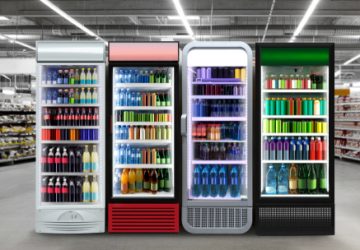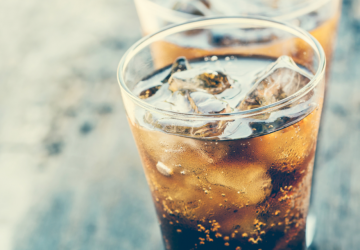“Less money for public schools” isn’t a very popular slogan, which may explain why diet scolds ignore the real-world consequences of yanking soft drink machines out of schools. Food cops see soda as a “wedge issue” that will open the floodgates of government regulations targeting a wider range of foods and beverages. Cloaking anti-soda rhetoric in the protective mantle of “childhood obesity” ignores a crucial reality: Soda bans don’t slim down our kids. As the case of Virginia shows, they just slim down schools’ budgets.
Schools in Virginia depend on millions of dollars a year from soft drink sales. Fairfax County, the state’s largest school district, added over $900,000 to its budget from soda during the 2002-2003 school year. Virginia Beach, the second largest, made $786,000. Schools use these funds to “pay for college scholarships, school supplies, field trips, computer software, reference books, yearbooks, scoreboards, football uniforms and security for athletic events.”
Elsewhere in the state, the interim director of finance for Hampton schools (which made $125,000 from soda sales in 2002-2003) notes that banning the machines doesn’t stop kids from drinking soda — it just drives much-needed school revenue elsewhere. “If they don’t get it in a school,” he says, “they will get it at a 7-11 around the corner.”
Sadly, logic hasn’t stopped food cops and trial lawyers from targeting soda in schools. Last year John “Sue the Bastards” Banzhaf threatened to sue individual Seattle School Board members over soft-drink vending machines. In just a few months, a California law banning soda machines in elementary and middle schools will go into effect. Harold Goldstein, director of the California Center for Public Health Advocacy (CCPHA), has referred to soda bans in schools as “just the entry point to address the bigger issues.” His group was behind a legislative push to tax soda in California. CCPHA is also part of a coalition to ban certain foods in the areas surrounding schools.
The fuss over fizz is not justified. The Georgetown Center for Food and Nutrition Policy found no link between soda consumption and obesity in children. A can of soda contains fewer calories than an identical serving of most fruit juices. And as we reported yesterday, a recent study found that overweight children actually consumed fewer calories than children of normal weight — the overweight kids just weren’t exercising enough. Instead of shooting hoops after school with friends, some kids are sitting inside and shooting bad guys in video games.
Last year, Dr. Lisa Sutherland at the University of North Carolina looked at U.S. government nutrition data to try and explain a 10 percent jump in teen obesity between 1980 and 2000. She found that teens’ caloric intake rose only 1 percent during those years, while their levels of physical activity dropped by 13 percent. A study published in the journal Pediatrics found that “only 21.3% of all adolescents participated in one or more days per week of PE [physical education] in their schools.”




